
Polymyalgia rheumatica Alchetron, The Free Social Encyclopedia
The signs and symptoms of polymyalgia rheumatica usually occur on both sides of the body and might include: Aches or pain in your shoulders. Aches or pain in your neck, upper arms, buttocks, hips or thighs. Stiffness in affected areas, particularly in the morning or after being inactive for a time. Limited range of motion in affected areas.

10 Symptoms of Polymyalgia Rheumatica Facty Health
To combat that, eat foods high in calcium and vitamin D. Calcium can strength your bones, and vitamin D helps your bones absorb calcium. Dairy products are a good source of calcium, including milk.

Polymyalgia Rheumatica Polymyalgia Rheumatica Pathophysiology Inflammation condition with no
Polymyalgia rheumatica (PMR) is a condition that causes pain, stiffness and inflammation in the muscles around the shoulders, neck and hips. Symptoms of polymyalgia rheumatica. The main symptom is muscle stiffness in the morning that lasts longer than 45 minutes. Other symptoms may include: extreme tiredness;

Polymyalgia rheumatica
Polymyalgia rheumatica (PMR) is an inflammatory disorder that causes widespread aching, stiffness and flu-like symptoms. It is more common in women than men and is seen more often in Caucasians than other races. It typically develops by age 70 and is rarely seen in people younger than 50. PMR may last from one to five years; however, it varies.
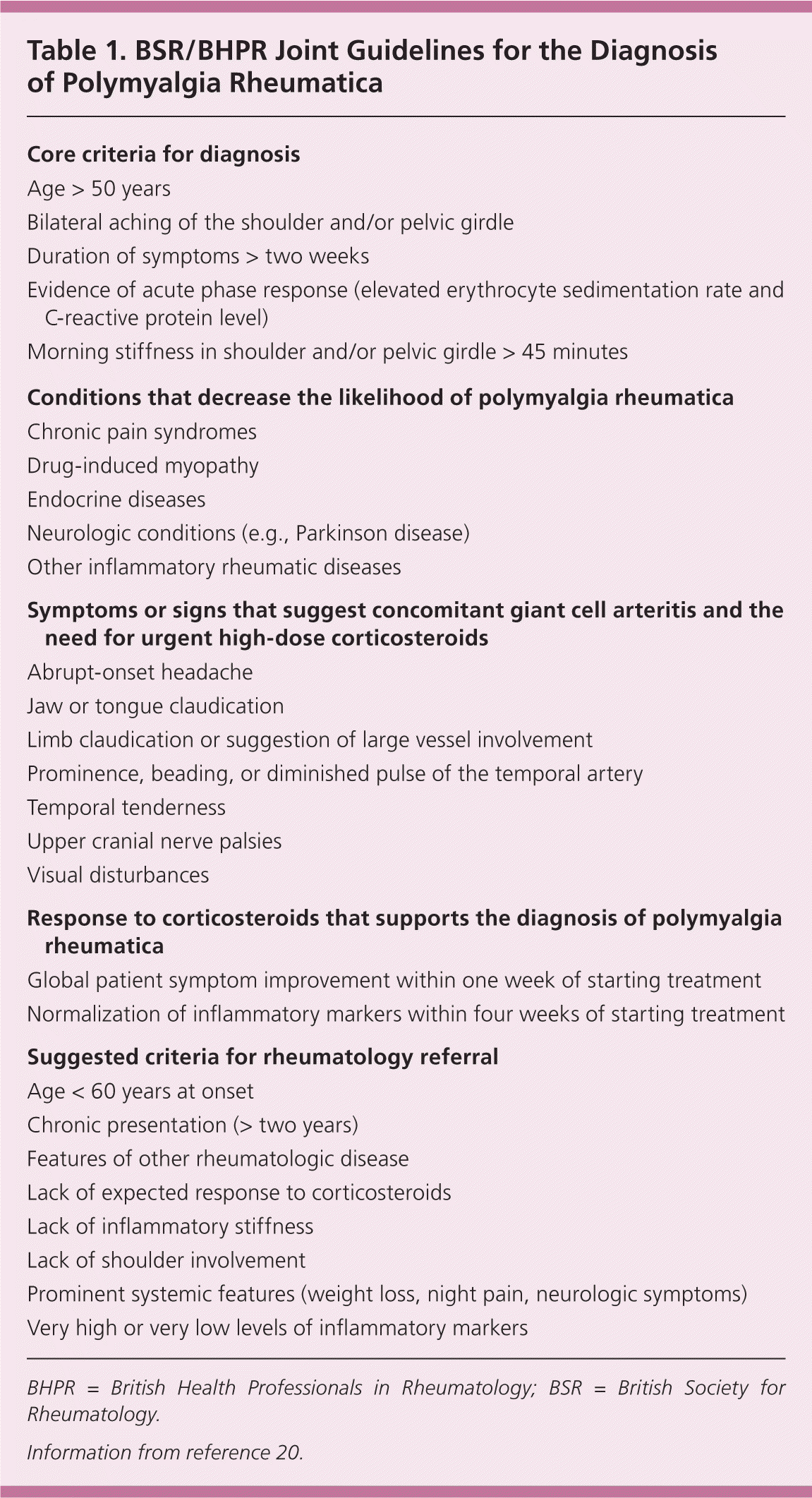
Recognition and Management of Polymyalgia Rheumatica and Giant Cell Arteritis AAFP
You may have noticed that inflammation is at the root of almost every chronic disease and condition that humankind suffers. You're more at risk for inflammation and the symptoms it brings as you age. One inflammatory condition that's common, but not well known, is polymyalgia rheumatica (PMR).

Polymyalgia Rheumatica Diet Do's and Don'ts Polymyalgia rheumatica diet, Polymyalgia
Polymyalgia rheumatica is an inflammatory condition affecting people over 50 years of age that causes pain and stiffness in your neck, shoulders and hips. It may also affect your upper arms, thighs and back. You'll usually feel the pain and stiffness on both sides of your body. The aching and stiffness are usually worse in the morning or when.
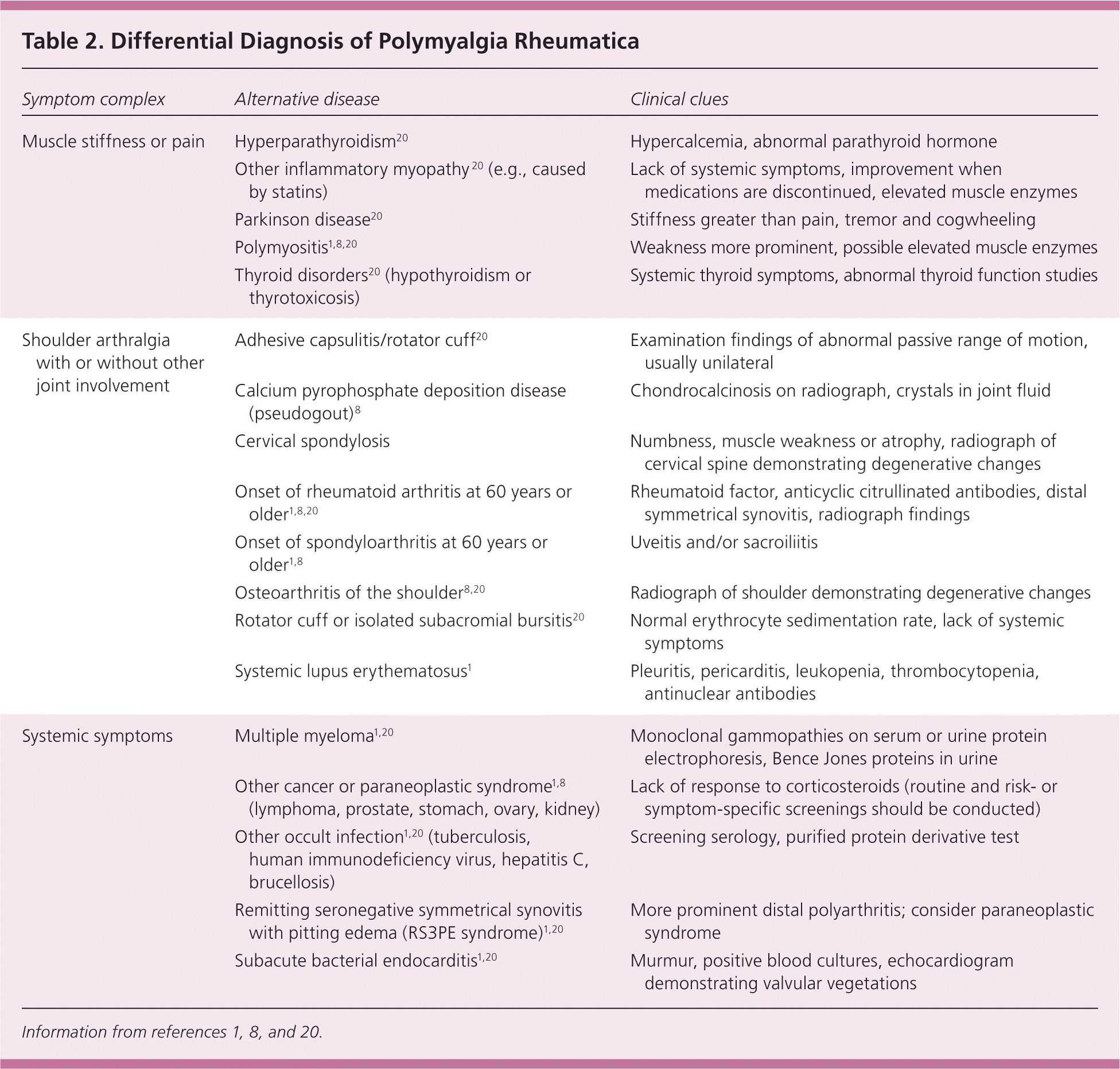
Recognition and Management of Polymyalgia Rheumatica and Giant Cell Arteritis AAFP
Polymyalgia rheumatica (poly-my-al-ger ru-mah-ticker), or PMR, is a relatively common condition that causes stiffness and pain in muscles. The word 'poly' means many and the word 'myalgia' means muscle pain. It can start at any age from 50, but mainly affects people over the age of 70. More women are affected than men.
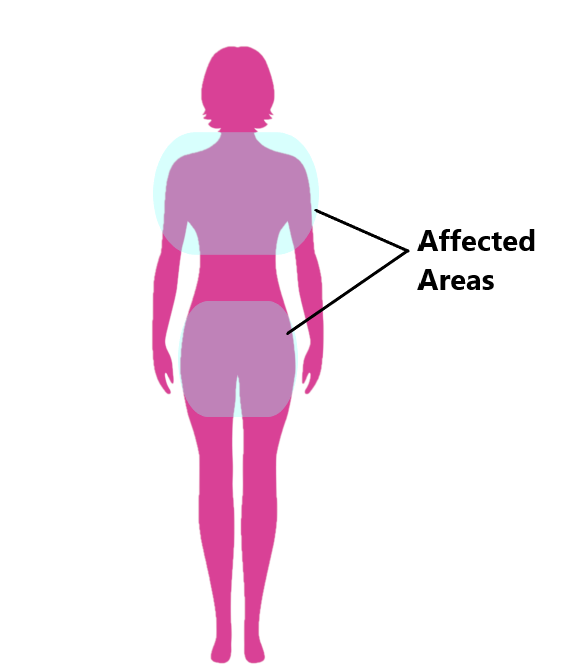
Polymyalgia Rheumatica My Family Physio
Fortunately it's in remission now. Here's an article you may find helpful - "Polymyalgia rheumatica is an inflammatory condition that causes a particular pattern of joint pain and stiffness, most commonly in older people. It is a rheumatic disorder closely associated, and often co-existing, with giant cell arteritis.

Polymyalgia Rheumatica Diet Do's and Don'ts Polymyalgia rheumatica diet, Polymyalgia
Polymyalgia rheumatica Quiz. Free quiz. Just 1 minute. Curated by doctors. *Please note that this quiz is not intended to be a substitute for medical advice or diagnosis. If you have concerns about your health, please consult with your healthcare provider. Take this quiz to find out if you might be suffering from polymyalgia rheumatica.
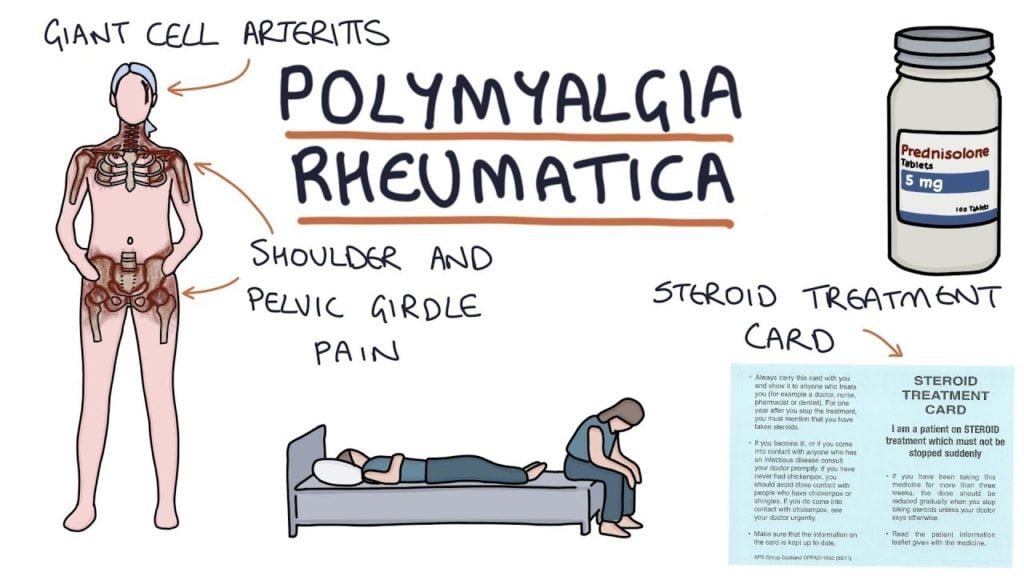
Polymyalgia Rheumatica Symptoms, Causes, Risk Factors & Complications
Typical Symptoms of Polymyalgia Rheumatica. History of connective tissue, autoimmune or rheumatic disease. Joint stiffness lasting for more than an hour in the morning. Fever. Stiff, rigid muscles causing difficulty bending joints. Hip pain. Joints feel warm. Upper jaw pain. Joint pain.

Polymyalgia rheumatica diet Foods to eat and avoid
PMR is an inflammatory condition that causes severe pain and stiffness in the muscles of your neck, back, shoulders, and hips. Doctors don't know what causes PMR. It usually occurs in people over 55, particularly women. Your neck, back, shoulders, and hips feel stiff and painful. To diagnose PMR, doctors do blood tests.

What Is Polymyalgia Rheumatica and Is It Related to Fibromyalgia?
Polymyalgia Rheumatica. Polymyalgia rheumatica involves inflammation of the lining of joints, causing severe pain and stiffness in the muscles of the neck, back, shoulders, and hips. The cause is unknown. The neck, back, shoulders, and hips feel stiff and painful. The diagnosis typically is based on symptoms and the results of blood tests.

Polymyalgia Rheumatica Homeopathic Treatment? Look Here
There's no specific test for polymyalgia rheumatica, but it's likely that a series of blood tests will be done. Erythrocyte sedimentation rate (ESR) and C-reactive protein (CRP) are blood tests that can be used to check the levels of inflammation in your body. If ESR and CRP are normal, it's unlikely that polymyalgia rheumatica will be diagnosed.
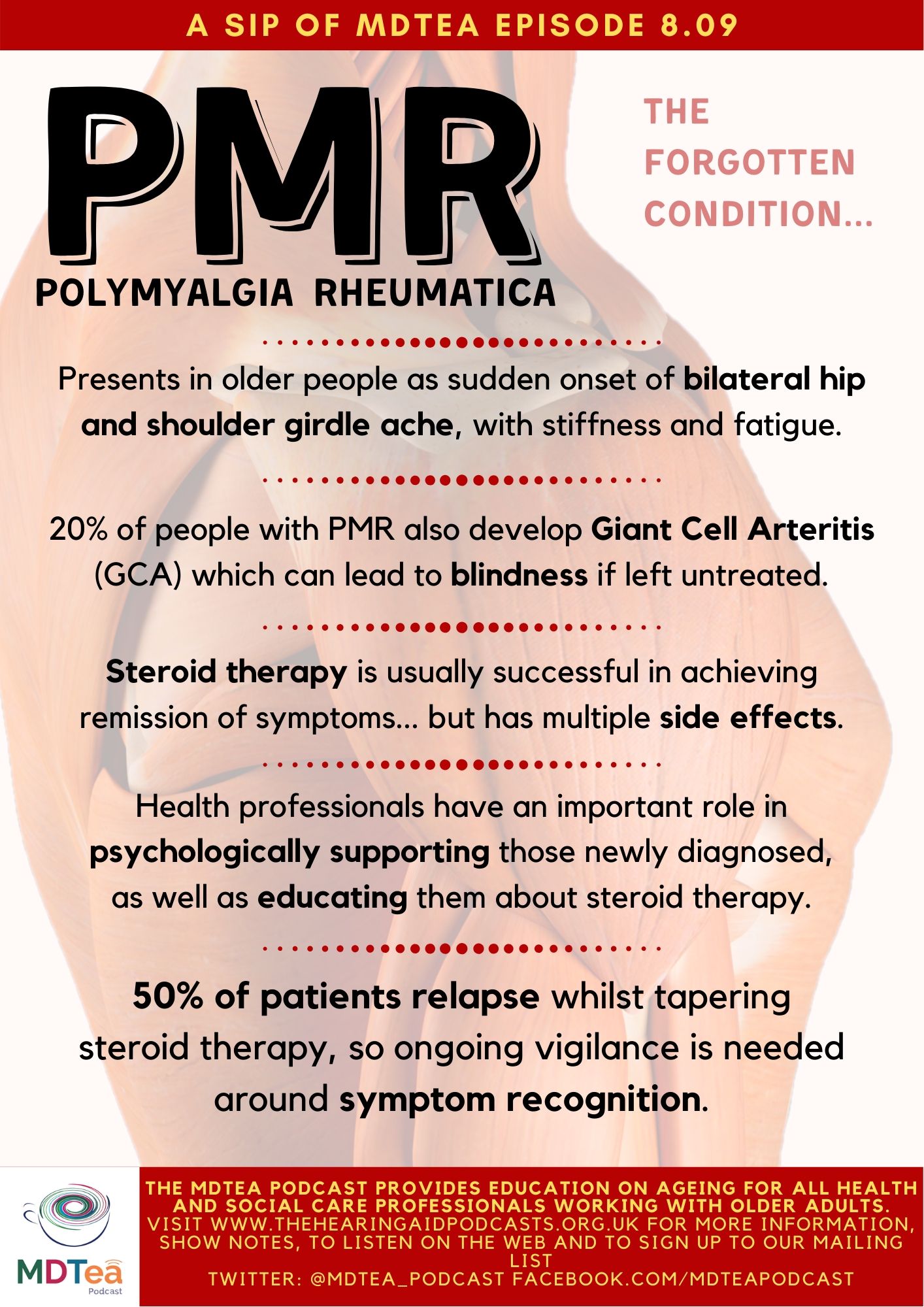
8.09 Polymyalgia Rheumatica the condition? The Hearing Aid Podcasts
Polymyalgia rheumatica is usually treated with a low dose of an oral corticosteroid, such as prednisone (Rayos). You'll likely start to feel relief from pain and stiffness within the first two or three days. After the first two to four weeks of treatment, your doctor might begin to gradually decrease your dosage depending on your symptoms and.
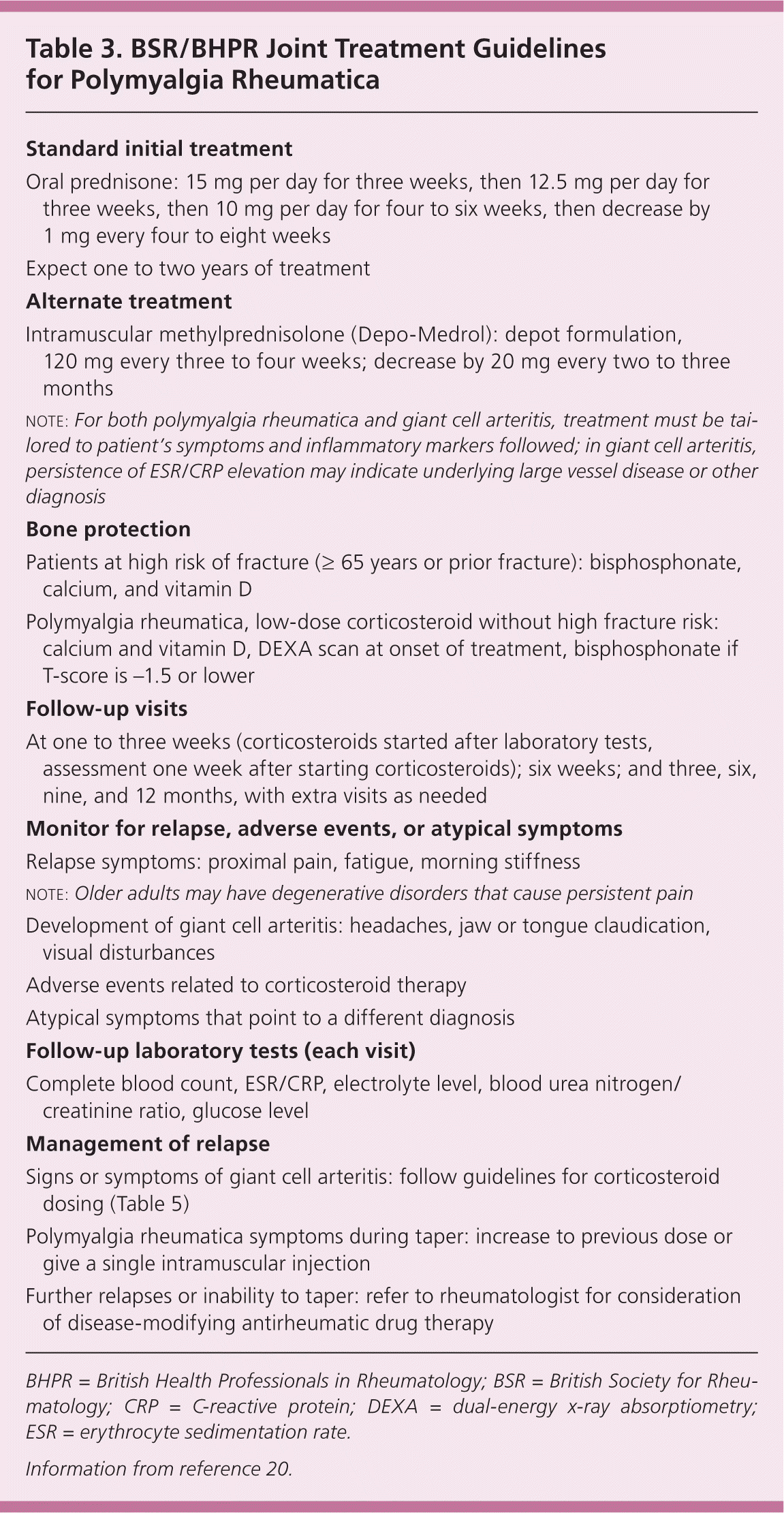
Recognition and Management of Polymyalgia Rheumatica and Giant Cell Arteritis AAFP
malaise. loss of appetite. sudden, unintentional weight loss. anemia. depression. low-grade fever. limited range of motion. The symptoms of polymyalgia rheumatica develop quickly, usually over.
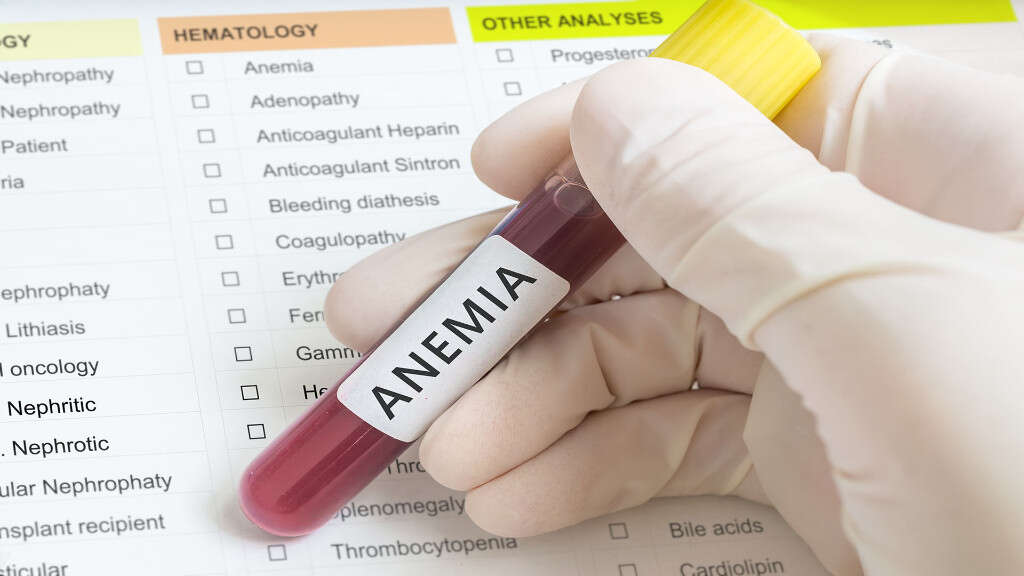
Polymyalgia Rheumatica 10 Polymyalgia Rheumatica Symptoms
Professional /. quizzes /. Polymyalgia Rheumatica. Brought to you by Merck & Co, Inc., Rahway, NJ, USA (known as MSD outside the US and Canada)—dedicated to using leading-edge science to save and improve lives around the world. Learn more about the Manuals and our commitment to Global Medical Knowledge.
- 4 1 2 A Louer Montreal Nord
- Ghost Lake Homes For Sale
- Messe Du Jour Marie Reine Du Monde
- Challenge Des Régions 2023 Gymnastique
- 爱 回 家 之 开心 速递 线 上 看
- Temps De Cuisson Pilon Poulet Airfryer
- Document Checklist For Permanent Residence In Canada
- Shih Poos For Sale Ontario
- Mobility Scooter Rental Niagara Falls Ontario
- Canuck Hunter Semi Auto Shotgun Review